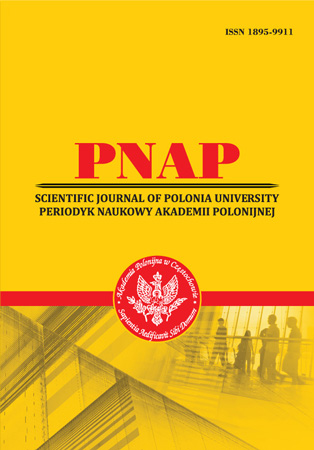THE CHANGING ATTITUDE TOWARDS STATE FRAGILITY
Abstrakt
The aim of the article is to trace the changes in the views of scholars on state fragility in recent decades. The paper marks the milestones of discourse changes on fragile states. The basic models and gaps in state functioning are covered, as well as the main aspects that have brought about changes in the attitude towards state fragility. The latest trends such as the usage of the resilient state term are also described. The article mentions the main poles of opinions towards the subject and mentions a range of existing debates in this regard. The greater context of international security is being taken into account. The view from the representatives of so-called fragile states is presented by the example of g7+ group. The article analyses the changes in the usage of the term, in the view of the core of the state functions and existing gaps as well as the latest trends in the discourse on state fragility.
Wykaz bibliografii
2. Bartenev, V. (2017). Ot "nesostoyavshihsia gosudarstv" k "neustoychivym sostoyaniyam": logika poniatiynoy ekvilibristiki. [From 'Failed States' to 'States of Fragility': Logic of Conceptual Acrobatics]. Polis. Political Studies, 26–41. doi:10.17976/jpps/2017.02.03 [In Russian]
3. Buzan, B. (2006) Will the ‘global war on terrorism be the new Cold War?, International Affairs, 82:6, 1101–1118.
4. Call, C. T. (2008). The Fallacy of the “Failed State.” Third World Quarterly, 29(8), 1491–1507.
5. Call, C. T. (2010) Beyond the “failed state”: Toward conceptual alternatives. European Journal of International Relations, 17(2), 303–326.
6. Carment, D., Prest, S. & Samy, Y. (2010). Security, Development and the Fragile State. London: Routledge.
7. Council of the European Union (2007). Council conclusions on an EU response to situations of fragility. 2831st External Relations Council meeting. Brussels: European Union.
8. Ghani, A. & Lockhart, C. (2007) Writing the History of the Future: Securing Stability through Peace Agreements. Journal of Intervention and Statebuilding, 1:3, 275–306.
9. Goldstone, J. et al. (2000). ‘Executive Summary: State Failure Task Force Report, Phase III Findings’, Instability Task Force, University of Maryland.
10. Grävingholt, J., Ziaja, S. & Kreibaum, M. (2015) Disaggregating state fragility: a method to establish a multidimensional empirical typology. Third World Quarterly, 36:7, 1281–1298.
11. Grävingholt, J., Ziaja, S., Ruhe, C., Fink, P., Kreibaum, M., Wingens, C. (2018) Constellations of State Fragility v1.0. German Development Institute / Deutsches Institut für Entwicklungspolitik (DIE).
12. Helman, G. B., & Ratner, S. R. (1992). Saving Failed States. Foreign Policy, (89), 3.
13. Khan, M. Z. (2017). The Fallacy of Fragile States Indices: Is There a 'Fragility Trap’?, BIIS. Krueger, A. & Laitin, D. (2008) Kto Kogo?: A Cross-Country Study of the Origins and Targets of Terrorism, 148–173. Cambridge University Press.
14. Lemay-Hébert, N., & Mathieu, X (2014). The OECD’s Discourse on Fragile States: Expertise and the normalization of Knowledge Production. Third World Quarterly 35, no. 2, 232–251. doi:10.1080/01436597.2014.878129.
15. Marshall, M., Gurr, T. & Jaggers, K. (2016). POLITY™ IV PROJECT Political Regime Characteristics and Transitions, 1800-2015 Dataset Users’ Manual. 1st ed. Centre for Systemic Peace.
16. Mata, J. & Ziaja, S. (2009). Users’ Guide on Measuring Fragility. Bonn: German Development Institute/UNDP.
17. Newman, E. (2009). Failed States and International Order: Constructing a Post-Westphalian World. Contemporary Security Policy, 30(3), 421–443.
18. OECD DAC (2008) Concepts and dilemmas of state building in fragile situations: From fragility to resilience. Paris: OECD.
19. Pospisil, J., & Kühn, F. (2016). The resilient state: new regulatory modes in international approaches to state building?, Third World Quarterly, 37:1, 1–16.
20. Rotberg, R. (2011) Failed states, collapsed states, weak states: Causes and indicators. Wilson Center, Washington, D.C., 1–25.
21. United States. (2002). The national security strategy of the United States of America. Washington: President of the U.S.
22. Ziaja, S., Grävingholt, J. & Kreibaum, M. (2019) Constellations of fragility: an empirical typology of states. In: Studies in Comparative International Development, 54 (2), 299–321.
Abstract views: 904 PDF Downloads: 206







